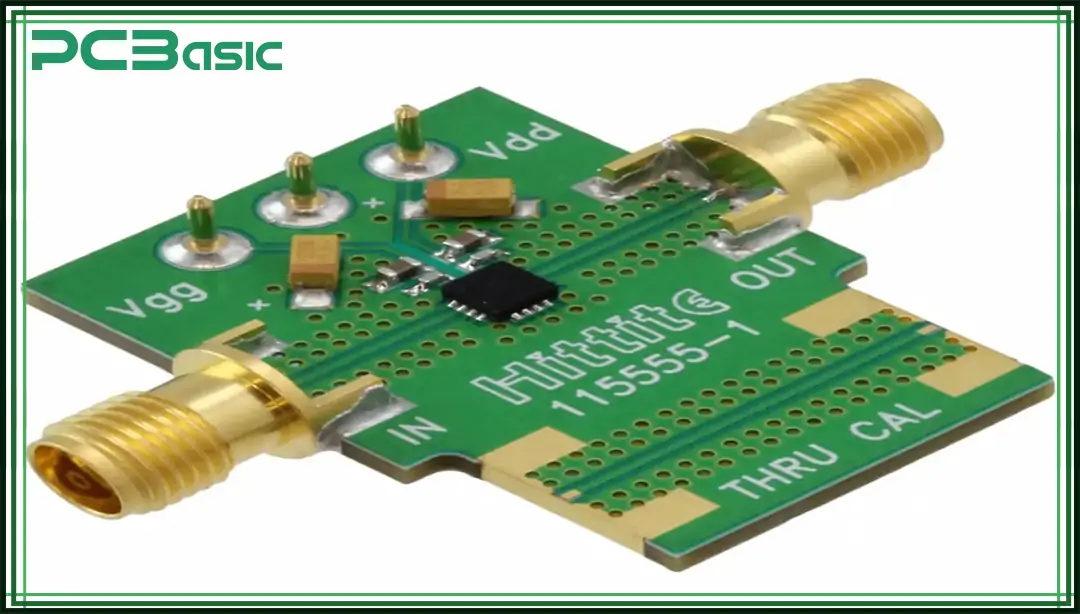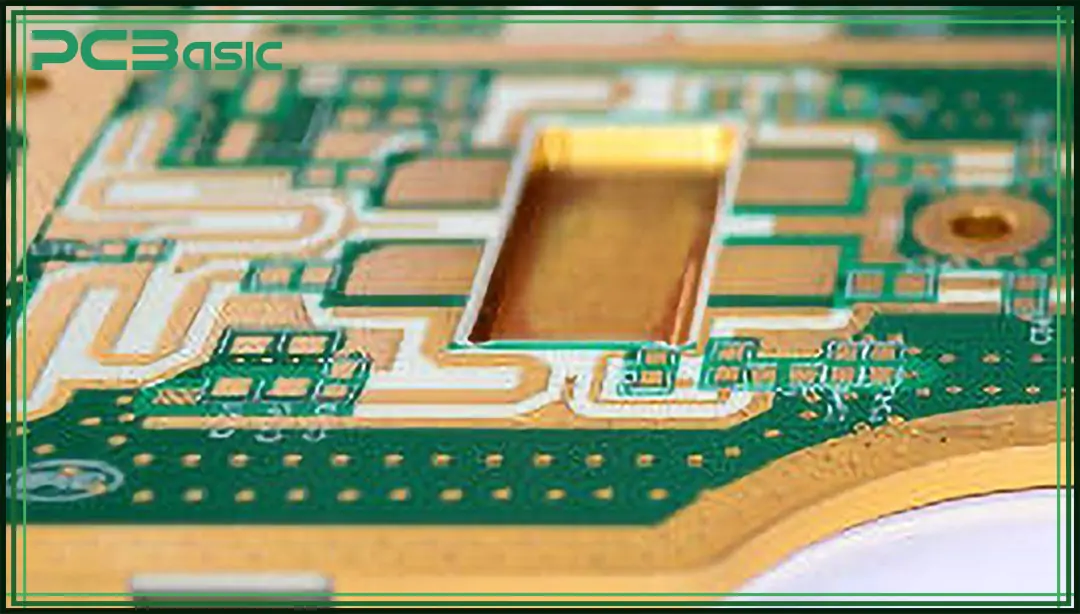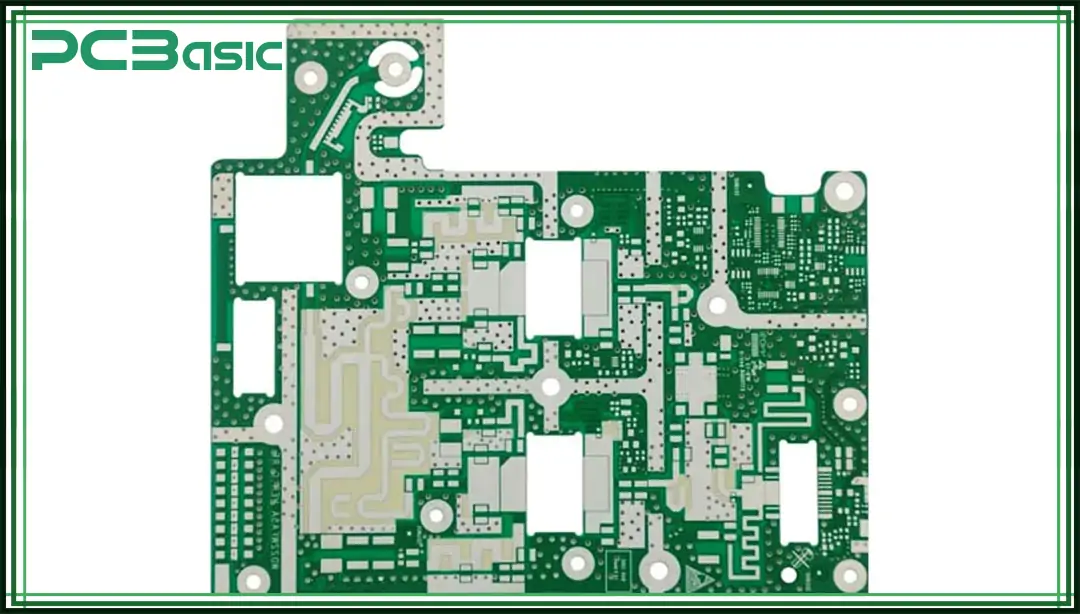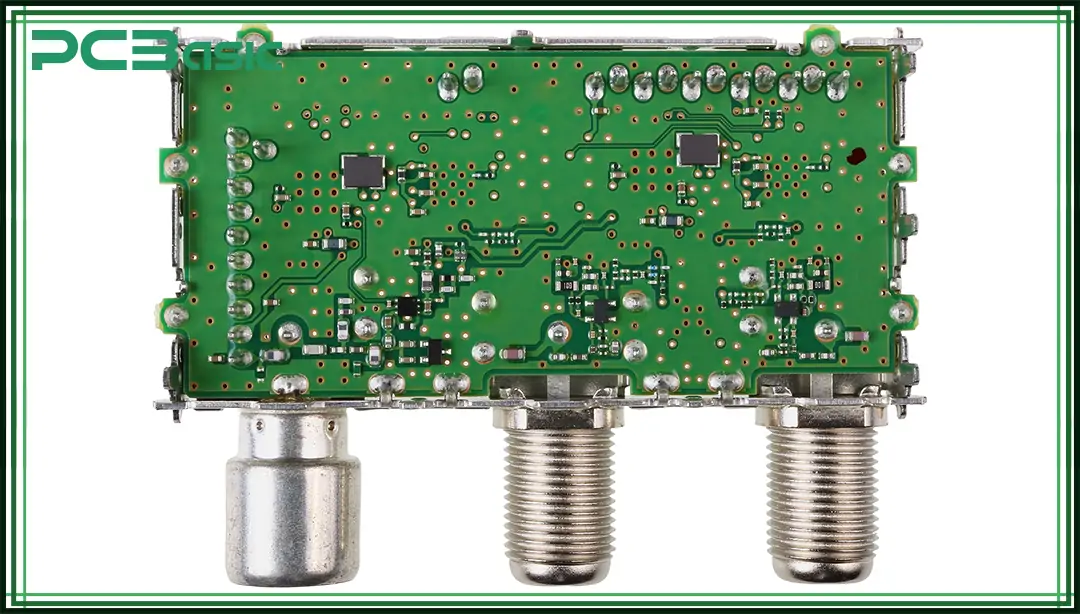Global high-mix volume high-speed Shenzhen PCBA manufacturer

Ru
9:00 -18:00, Mon. - Fri. (GMT+8)
9:00 -12:00, Sat. (GMT+8)
(Except Chinese public holidays)





Global high-mix volume high-speed Shenzhen PCBA manufacturer

Ru
9:00 -18:00, Mon. - Fri. (GMT+8)
9:00 -12:00, Sat. (GMT+8)
(Except Chinese public holidays)





HomePage > Blog > Knowledge Base > Overview of a Microwave PCB
Technological breakthroughs have revolutionized modern electronics. Now, we are more dependent on fast communication systems. You would not be surprised to know that microwave PCBs are the key elements of all systems. These unique printed circuit boards are meticulously designed to offer greater effectiveness and signal quality.
Moreover, managing signals with high frequencies makes them suitable for many industries, such as communications and healthcare equipment. Simply put, microwave PCB is a demanding field of the PCB industry. Therefore, the demand for RF PCB manufacturers has increased.
Let’s find out everything about the microwave circuit board in this blog.

A microwave PCB is a specialized PTFE circuit board. It is also known as RF PCB and is intended for high-frequency applications or designed for frequencies surpassing 1 GHz.
The goal of a microwave PCB is reducing signal loss and optimizing signal integrity. While manufacturing a RF microwave circuit board, high expertise is required to get the desired outcome.
• The material used is different. While the regular ones use FR4, microwave boards use low-loss material. Most commonly, PTFE-or ceramic-filled laminate is used.
• The design has to guarantee that signals will not interfere.
• Signals operating at high frequency will need a certain tolerance level to ensure smooth performance.

Microwave PCB boards have outstanding excessive abilities. They are designed for high-frequency signals and need precise engineering and special materials to work efficiently. Here are some key features:
One of the remarkable features of the microwave circuit board is its high-frequency support. Their low dielectric constant enables higher transmission speed and reduced signal loss. Ultimately, the signal loss is minimized while maintaining high speed.
At high frequencies, even small losses affect performance. The microwave circuit board uses materials like PTFE or Rogers laminates to minimize signal loss. This keeps communication clear and reliable.
Another striking characteristic is controlled impedance. With this feature, it ensures signals travel without distortion. Engineers carefully design trace widths and spacing. This prevents signal reflections and power loss.
High-frequency signals are sensitive to interference. The microwave board is built with shielding and precise trace routing to prevent unwanted noise.
Heat can impact performance. These boards use materials that withstand high temperatures. This makes them ideal for aerospace and defense.
Unlike standard PCBs, microwave PCBs require advanced substrates. These materials ensure long-term reliability in harsh environments.
Each feature makes microwave PCBs essential in modern communication and defense systems.

The material selection of the product influences the performance of the PCB microwave. Microwave boards run at high frequencies, where minor inconsistencies in the materials used can result in signal loss, interference, and overheating, unlike standard circuits. That is why selecting the correct substrate is so essential.
PTFE (Teflon) is the best material for microwave circuit boards. It provides low dielectric loss, thermal stability, and minimal signal distortion. However, its high thermal expansion ratio adds complexity to manufacturing.
This material combines PTFE’s electrical benefits with improved mechanical stability. The added ceramic content reduces thermal expansion. Therefore, it is ideal for high-power microwave PCBs that require durability and precision.
Leading high-frequency PCB manufacturers often choose Rogers laminates, such as Rogers 3003, 4003C, and 5880. These materials offer low loss, stable dielectric properties, and high reliability—perfect for demanding RF and microwave applications.
When extreme heat resistance is required, polyimide is the go-to choice. It withstands harsh environments. So, it is popular in the military, aerospace, and high-performance microwave PCBs.
While traditional FR4 isn’t ideal for microwave boards, high-frequency FR4 provides a cost-effective alternative for lower-end RF applications where performance and budget must be balanced.
Each material serves a unique purpose, and selecting the right one ensures optimal performance, longevity, and signal integrity.
Manufacturing a microwave PCB requires extreme precision. High-frequency signals are sensitive to even the smallest variations. So, the RF PCB manufacturer controls materials, design, and processing carefully.

The process begins with choosing the right low-loss dielectric materials like PTFE, ceramic-filled laminates, or Rogers laminates. These materials ensure stable performance at high frequencies.
Multilayer microwave circuit boards require careful layer arrangement. Engineers optimize the stack-up to minimize interference, control impedance, and maintain signal integrity.
Since high-frequency signals are affected by even microscopic inconsistencies, etching accuracy is crucial. Chemical or laser etching ensures precise trace widths and spacing, preventing unwanted signal distortion.
Finishes like ENIG (Electroless Nickel Immersion Gold) and immersion silver, improve conductivity and protect the microwave PCB from oxidation and wear.
Every microwave board undergoes rigorous RF testing, impedance measurements, and thermal assessments to ensure optimal performance. Any deviation can lead to signal loss, interference, or reduced reliability.
A well-manufactured microwave PCB guarantees high-speed performance, durability, and minimal signal disruption. This makes it essential for aerospace, radar, and communication systems.

Microwave PCBs play a crucial role in modern technology. Their ability to handle high-frequency signals makes them essential in industries where signal integrity, low loss, and precision are critical. These specialized circuit boards are used in communications, aerospace, defense, automotive, and medical applications.
High-speed RF PCBs power 5G infrastructure, satellite communications, and wireless networks. They ensure low latency and stable signals, making them key components in cell towers, antennas, and satellite transceivers. Without microwave boards, seamless global communication would be impossible.
Radar, avionics, and military communication systems rely on microwave circuit boards to operate at high frequencies with minimal interference. They are used in aircraft navigation, missile guidance systems, and surveillance technologies, where accuracy and reliability are critical.
Modern vehicles, especially those with Advanced Driver-Assistance Systems (ADAS), use microwave PCBs for radar sensors. These sensors detect objects, measure distances, and enable collision avoidance and autonomous driving.
Medical devices like MRI scanners, CT machines, and wireless patient monitoring systems use high-frequency PCBs to transmit signals without interference. Precision in these applications ensures accurate diagnosis and treatment.
Microwave PCBs are also found in industrial automation, weather radar, and scientific research equipment. Their ability to withstand harsh environments while maintaining signal clarity makes them essential in laboratories and production facilities.
Designing a microwave PCB is more complex than a standard circuit board. Since high-frequency signals are sensitive to material properties, trace layouts, and interference, engineers or the RF PCB manufacturer must carefully consider every design aspect to ensure optimal performance.
Choosing the right low-loss dielectric materials like PTFE, ceramic-filled laminates, or Rogers laminates is crucial. These materials minimize signal loss and distortion, ensuring consistent high-frequency performance.
For microwave circuit boards, maintaining stable impedance is essential to prevent signal reflections and power loss. Engineers calculate trace widths, spacing, and dielectric constants to match impedance requirements.
High-frequency circuits generate heat, which can degrade performance. Using thermally stable substrates, heat sinks, and efficient PCB layouts helps dissipate heat and maintain reliability.
Interference is a major concern in RF PCBs. Proper ground plane design, shielding techniques, and controlled trace routing help reduce electromagnetic interference (EMI) and crosstalk.
Finishes like ENIG (Electroless Nickel Immersion Gold) or immersion silver enhance conductivity and protect against oxidation. High-frequency signals require smooth copper traces to reduce resistance and improve signal transmission.

PCBasic is a trusted name in high-frequency PCB manufacturing, providing advanced RF and microwave circuit boards for industries that demand precision and reliability. With years of experience, cutting-edge technology, and strict quality control, PCBasic ensures superior performance in telecommunications, aerospace, radar, and medical applications.
• Expertise in High-Frequency PCBs:
As one of the high frequency PCB manufacturers, PCBasic specializes in microwave PCB, and RF PCB manufacturing, using materials optimized for high-frequency applications.
• Premium Materials for Low Signal Loss:
The company works with high-performance substrates like Rogers laminates, PTFE (Teflon), and ceramic-filled materials, ensuring low dielectric loss and stable signal transmission.
• Precision Manufacturing:
Advanced etching, multilayer stacking, and impedance control guarantee accuracy in microwave circuit board production.
• State-of-the-Art Facility:
With nine SMT lines and advanced testing tools, PCBasic ensures high-quality manufacturing, whether for prototypes or large-scale production.
• Stringent Quality Standards:
PCBasic is certified in ISO9001, ISO14001, and IATF16949, ensuring compliance with global industry standards.
The microwave PCB is the backbone of high-frequency communication and electronic systems. It has become an integral component for signal strength losses in environments, i.e., telecommunication, aerospace, defense, automobile, and medical technology.
To Design these circuit boards, they need specific materials, precise impedance control, and advanced equipment and fabrication techniques.
The RF PCB manufacturer guarantees dependable functioning via high-quality materials and serious testing.
Microwave boards are the need of the hour, whether it’s for 5G networks, radar systems, or medical imaging. As technology matures, demand for high-frequency PCBs will only grow, making expert manufacturing more important.
PCBasic is your reliable RF PCB supplier that brings your aspirations to life. Contact us now.

Assembly Enquiry
Instant Quote